The Economics and Statistics Division maintains archives of previous publications for accountability purposes, but makes no updates to keep these documents current with the latest data revisions from Statistics Canada. As a result, information in older documents may not be accurate. Please exercise caution when referring to older documents. For the latest information and historical data, please contact the individual listed to the right.
<--- Return to Archive
For additional information relating to this article, please contact:
July 16, 2021HOUSING STARTS, JUNE 2021 With June reference month results, year-over-year (June 2021 vs June 2020) and year-to-date (Jan-Jun 21 vs Jan-Jun 20) are in part showing the rebounds in economic activity from the unprecedented declines observed at the start of the COVID-19 pandemic.
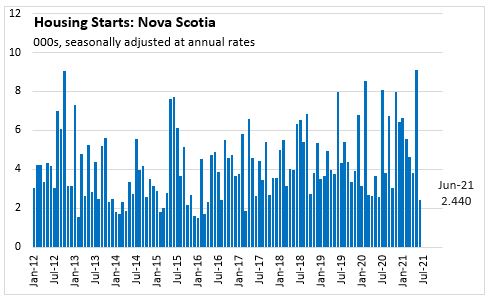
Nova Scotia’s housing starts (seasonally adjusted annualized rate) totalled 2,440 units in June 2021. This was 73.2% below the revised 9,099 units started in May 2021. The revised seasonally adjusted annualized number of housing starts in May 2021 is the largest estimate for a month in the data series that starts January 1990.
Housing starts in Halifax decreased 97.5% month-over-month to 167 units. Outside of Halifax, housing starts were down 0.7% from May and totalled 2,273 units in June.
Compared to June 2020, Nova Scotia’s housing starts were 6.3% lower with the 88.5% decline in Halifax and a 96.5% increase outside of Halifax.
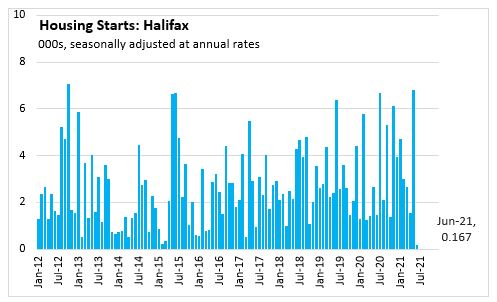
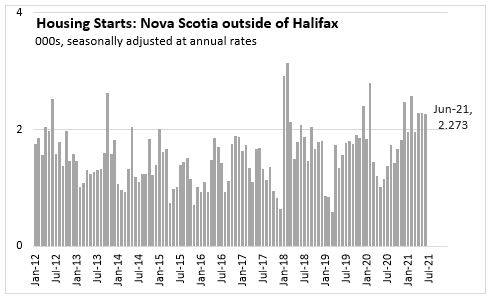
Housing starts trended down across the province in the first half of 2020 before rebounding in the summer of 2020. Since then, housing starts have trended up across the province. In recent months, the six-month moving average in Halifax has come down from its peak in late 2020. Outside of Halifax has had an upward trend in housing starts.
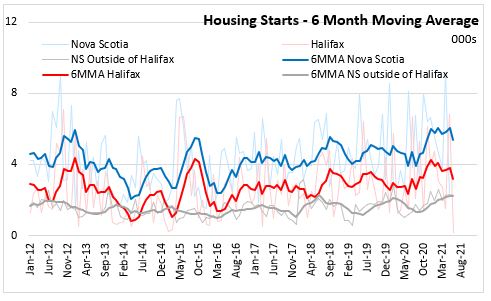
In urban areas, housing starts for multiples are generally higher than for singles with greater variability month-to-month. The six-month moving average for singles had trended upward since early 2019 before a modest moderation in recent months. The six-month moving average for multiples rose during the summer months of 2018 and declined until the first quarter of 2019. After a period of fluctuation in 2019 and 2020, the six-month moving average for multiples has been at an elevated level in the first six months of 2021.
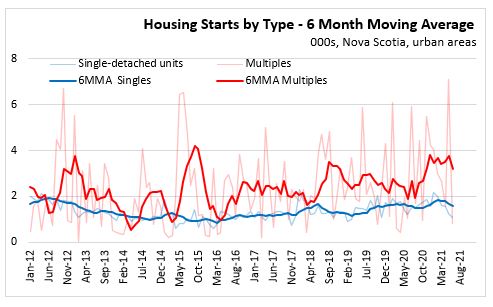
In Canada, housing starts decreased 1.5% from the previous month to 282,070 units in June 2021. When compared to June 2020, housing starts in Canada were up 33.1%.
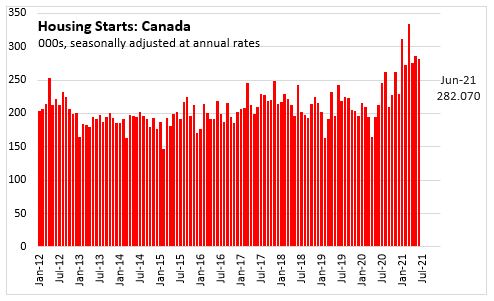
Housing starts declined in six provinces from May 2021 to June 2021, with Nova Scotia (-73.2%) reporting the largest decline. British Columbia (+43.1%) posted the largest increase.
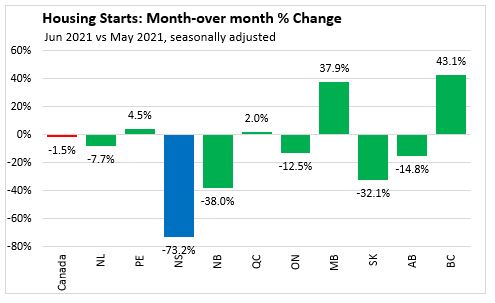
During the first six months of 2021, Nova Scotia's housing starts were up 38.2% compared to the same period last year. Canada’s housing starts increased 47.6%. Housing starts rose in all provinces with Newfoundland and Labrador posting the strongest growth (+150.4%), and Prince Edward Island the slowest (+9.0%).

Note: Urban areas are defined as areas over 10,000 people
Source: Statistics Canada, Table 34-10-0158-01 Canada Mortgage and Housing Corporation, housing starts, all areas, Canada and provinces, seasonally adjusted at annual rates, monthly (x 1,000) ; Table 34-10-0156-01 Canada Mortgage and Housing Corporation, housing starts in all centres 10,000 and over, Canada, provinces, and census metropolitan areas, seasonally adjusted at annual rates, monthly (x 1,000)
<--- Return to Archive